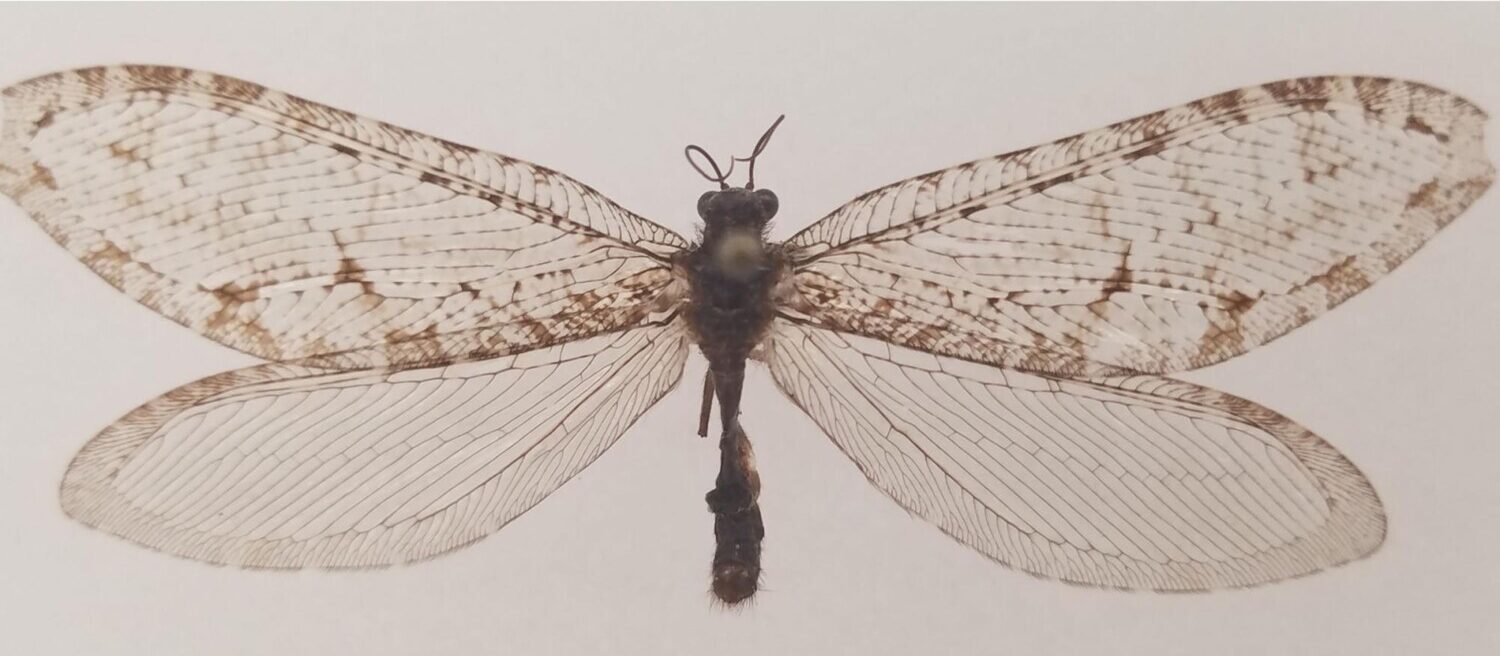A quick trip to Walmart led to rare a discovery after a university scientist found a historic insect dating back to the Jurassic period.
Michael Skvarla, director of Penn State University’s Insect Identification Lab, found the large insect outside a Walmart in Fayetteville, Arkansas, in 2012, when he was a doctoral student at the University of Arkansas.
“I remember it vividly, because I was walking into Walmart to get milk and I saw this huge insect on the side of the building,” he said in a press release from Penn State. “I thought it looked interesting, so I put it in my hand and did the rest of my shopping with it between my fingers. I got home, mounted it, and promptly forgot about it for almost a decade.”
Skvarla initially misidentified the specimen, but learned its true identity in 2020 while teaching an online course based on his personal insect collection. Skvarla used his own specimen samples to teach the class, which was held via Zoom due to the COVID-19 pandemic.
Though he originally thought to be an antlion, Skvarla noticed that the insect’s characteristics didn’t quite match up during the course, so students got to work comparing features and discovered that it is actually a giant lacewing dating back to the Jurassic period.

The finding has since been confirmed via DNA testing and the insect is now in the collections of the Frost Entomological Museum at Penn State, where scientists and students will use it for further research.
Skvarla says the discovery likely reveals a larger story about biodiversity and a changing environment. He said the giant lacewing’s disappearance from North America largely remains a mystery; scientists hypothesize everything from the increase in artificial light to the introduction of non-native predators as potential causes. After researchers analyzed collection records of giant lacewings and placed them onto a map to see their distribution, they realized that the Fayetteville specimen was the first spotted in eastern North America in more than 50 years.
How the insect ended up on the side of a well-lit Walmart is another mystery, but Skvarla says it suggests the bug was attracted to the lights.

“It could have been 100 years since it was even in this area — and it’s been years since it’s been spotted anywhere near it,” he said in the release. “The next closest place that they’ve been found was 1,200 miles away, so very unlikely it would have traveled that far.”
Researchers suspect the insect represents a rare surviving population of North American giant lacewings that have evaded detection and extinction for millions of years — a finding that highlights how an everyday situation can lead to a historic discovery.
This story originally appeared on Simplemost. Check out Simplemost for additional stories.


